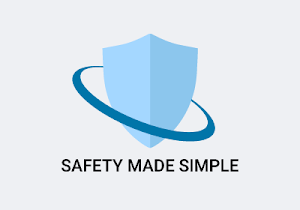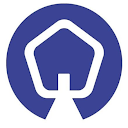In this article, we’re going to be taking an in-depth look into what IOSH is.
We’ll be examining all of their (many) arms; from their health and safety training courses, such as the IOSH Managing Safely Course, to their qualifications, membership categories, initiatives, and everything in between.
Although, before we get started, it’s worth noting that the answer to this question, What is IOSH?, or rather, what people think of IOSH, will vary significantly from person to person. You see, the perception of IOSH, who they are, and what they do, all comes down to personal experience.
For example, an occupational safety and health practitioner who has no interest in IOSH, probably isn’t going to be someone who sings their praises. However, let’s say we discount safety and health practitioners who do not subscribe to IOSH.
Let’s talk solely about IOSH members.
Surely all those who are paying an annual IOSH membership fee, are doing so for a very good reason.
Well, the answer is yes.
However, those reasons vary massively.
There are some in the health and safety ‘game’ who are head over heels for our professional body. They eagerly await their monthly issue of the IOSH Magazine publication. They might attend every IOSH branch meeting, and every health and safety event possible or they regularly and meticulously update their IOSH continuing professional development (CPD) portal.
They’re IOSH through, and through.
However, there are a significant number of IOSH members who subscribe to the professional body for one reason, and one reason only.
Letters.
Or, more specifically, letters after their name.
It’s the power behind the letters, or rather, how employers perceive those letters, that is key.
When recruiting for competent safety and health practitioners, employers often look for a specific category of IOSH membership. Now, the specifics of the employer’s requirements – their preferred IOSH membership category – will differ dependant upon the position being offered, and we’ll discuss each membership category in more detail later.
However, the key takeaway point here, is that IOSH membership (and the perception of competence that a given membership category provides) can be a huge factor when obtaining employment in the health and safety arena.
This isn’t true in all cases – there are some who have had hugely successful careers in occupational health and safety without ever being a member of IOSH.
However, if your a safety and health practitioner, on the whole, a higher IOSH membership category usually translates to; increased employability, more benefits, and a higher salary.
Like it, or not.
In the majority of cases – IOSH membership counts.
So, we enter into an area in which there are a significant number of IOSH members who, if it weren’t for the weight carried by the letters after their name, wouldn’t dream of subscribing to IOSH membership.
Again, this isn’t always the case; it may even be a minority of cases.
Nonetheless, it’s an important point to note. Not just because it’s important to demonstrate both sides of the ‘IOSH argument’.
However, also because it’s important to understand just how vital IOSH membership is when it comes to finding employment or progressing your health and safety career.
So, without further delay – let’s jump straight into it…
What is IOSH?
IOSH is the largest professional occupational safety and health membership organisation in the world.
Founded in 1945, IOSH is a not-for-profit organisation with 50,000+ members in over 130 countries.
Based in the UK, they act as the voice of the health and safety profession and often campaign on issues affecting millions of working people worldwide.
They’re committed to creating a safer and healthier world of work.
Also, regardless of whether you agree with everything IOSH does or doesn’t do, I think we’re all united in our vision of a safer and healthier workplace.
A world in which people can commute safely, work safely, and return home to their loved ones safe and healthy, every single day.
IOSH is also the only chartered body for health and safety professionals, which means they help guide the profession with their Code of Conduct, professional development standards, and equality and diversity policies.
They help to regulate the health and safety profession to ensure that IOSH members are the BEST in the world.
IOSH helps drive the health and safety profession forward with campaigns such as their No Time to Lose campaign and their Life Savings campaign.
They also offer a selection of world-renowned health and safety training courses.
It is quite an impressive set of credentials, and it’s easy to see why they’re such a ‘big player’ in the health and safety ‘game’.
So, by now we know what IOSH (the organisation) does, but what does the word IOSH mean?
What Does IOSH Stand For?

So, what does IOSH mean?
Well, IOSH stands for Institution of Occupational Safety and Health.
Moreover, as mentioned previously, they are the only chartered body for health and safety professionals in the world.
IOSH are committed to improving the working environment of workers worldwide and pushing the industry forward. A minor, while relatively common mistake that’s often picked upon here, is the term ‘Institute’ in the place of ‘institution’.
Now, this shouldn’t send too many pulses racing, but you’d be surprised.
So it’s just one to keep in mind for the future.
What is IOSH Training?

IOSH offer a wide range of health and safety training.
They’re a world leader in developing certified health and safety training courses.
And they offer one of the world’s most comprehensive occupational safety and health (OSH) libraries of courses available, including:
- Safety and Health for Business
- Managing Occupational Health & Wellbeing
- Leading Safely
- Managing Safely
- Managing Safely Refresher
- Fire Safety Awareness
- Fire Safety for Managers
- Environment for Business
- Working Safely
Again, pretty impressive stuff.
IOSH also offers a range of industry, job role, and skill-specific tailored courses.
And here’s an interesting fact that you may not have realised about IOSH…
They also have a system for accrediting non-IOSH courses.
What does this actually mean for you?
Well, if you’re thinking of developing your own course, and want to give it that IOSH ‘seal of approval’, the option is available. Of course, this comes at a cost, and a pretty substantial one, at that.
However, if you believe you have a niche; a course that is needed and is not yet available, or believe your content is unrivalled, then you may want to consider this option.
Having that ‘IOSH stamp’ could make all the difference when marketing the course to your customers.
For example, I have attended an IOSH approved ‘Evacuation Chair Train the Trainer Course’. Not one directly developed by IOSH, but as it had their approval, it swung my vote.
I guess it was my assurance that the course had met the standards which I accepted as suitable when it came to training.
So, we know that IOSH has developed a shed load of health and safety training courses.
They offer a wide range of accredited qualifications.
But, what do they actually involve?
Let’s take a look.
IOSH Qualifications

Here, I’m going to discuss some of the more popular courses and qualifications IOSH have to offer.
I won’t go into the finer detail of every course, but we’ll establish a strong overview of what they consist of, and who they’re for.
Whether you’re looking to take that first step on the health and safety career ladder, or you’re a hardened HSE veteran looking to obtain the right training for your workforce.
It doesn’t really matter.
After reading this guide, you’ll know everything there is to know about IOSH, and the qualifications they provide – which, in my opinion, are some of the best in the business, bar none. It’s also worth noting that throughout this section of the article, I’ll be referring to varying levels of qualifications.
Moreover, you’ll need to understand what these relate to if you want to achieve a strong understanding of exactly what you’re getting.
So, in England, Wales, and Northern Ireland, there are nine qualification levels.
- Entry Level
- Level 1 – Equivalent to GCSE – grades 3, 2, 1 or grades D, E, F, G
- Level 2 – Equivalent to GCSE – grades 9, 8, 7, 6, 5, 4 or grades A*, A, B, C
- Level 3 – Equivalent to A level
- Level 4 – Equivalent to a higher national certificate (HNC)
- Level 5 – Equivalent to a higher national diploma (HND)
- Level 6 – Equivalent to a degree with honours – for example, bachelor of the arts (BA) Hons, bachelor of science (BSc) Hons
- Level 7 – Equivalent to an integrated master’s degree, for example, master of engineering (MEng), or a master’s degree, for example, master of arts (MA), master of science (MSc)
- Level 8 – Equivalent to a doctorate, for example, doctor of philosophy (PhD or DPhil)
Ordinarily, when a qualification is offered, it will run broadly in line with one of these nine levels.
It’s how we standardise what qualifications are ‘worth’ what.
So, with that in mind, let’s take a look at what IOSH has to offer.
What is NCFE IOSH Level 3 Certificate in Safety and Health for Business?
Yeah, it’s a mouthful…
However, if we look past the overly long course title, the Level 3 Certificate in Safety and Health for Business is a hot topic right now, and rightly so.
Why?
Because it’s the ‘new kid on the block’.
IOSH say they have released this qualification in response to “business trends” and “feedback from employers”.
However, here’s my guess…
They’ve released this course to compete with the likes of the NEBOSH National General Certificate in Occupational Health and Safety.
And, to be fair – why wouldn’t they?
The Level 3 health and safety qualification market is enormous in the UK. As we said earlier, this level of qualification is broadly equivalent to A-levels.
It’s often seen as the first real step on the ladder to becoming a competent safety and health practitioner.
A market where, just a few years ago, NEBOSH completely dominated. I won’t pretend that I mix with the higher echelons of either IOSH or NEBOSH, but I do often wonder how the release of this qualification has affected relations between the two…
However, that’s a discussion for another day.
The point is, IOSH now offer an alternative.
And what’s more, it’s an alternative with no written exams – a big bonus for those of us who despise the idea of sitting in a room for hours on end, and leaving with nothing more than cramp in our forearms.
This could be one to watch out for the future, and if it’s anything like their famous Managing Safely Course, they could be onto a real winner.
What is IOSH Managing Safely?

So, the Managing Safely Course is one of my favourite courses.
I have not only attended the course as a student on numerous occasions, but I now have the pleasure of teaching it.
I’m a genuine fan and think it’s better than most other courses out there, at a similar level. I rate it so much that I recently wrote an in-depth article on managing safely, and based it around the fundamental principles and concepts taught on that very course.
If you’re interested in attending the course in the future, it’ll help you out in your studies.
Alternatively, if you’re brushing up on health and safety management in general, I’d say it’s definitely worth a look. If you’re interested, check out our definitive guide on the topic.
The 3-day IOSH Managing Safely course is primarily designed to help managers, responsible for the health and safety of others in the workforce, fully understand what their responsibilities are.
Although, as I said earlier, it is an excellent foundation level course for budding health and safety professionals.
It’s also hugely beneficial for supervisors, or pretty much anyone with line management responsibility.
The course itself offers practical, step-by-step guidance on health and safety management, with a strong focus on business outcomes.
As I said, IOSH Managing Safely is geared toward anyone in a supervisory or managerial role, and the course will provide the knowledge and tools to help them manage safely.
Some of the key business benefits of the course can include:
- Reduced sickness and accidents, leading to higher productivity.
- The promotion and adoption of improved safety culture, improving the overall organisation.
- Workplace improvements brought on through the active involvement of staff.
- Well qualified managers and supervisors to internationally recognised certification standards.
- An enhanced reputation throughout the supply chain.
Individuals taking the IOSH Managing Safely course can expect to gain an understanding of:
- Their ability to assess and control risks and hazards correctly.
- Their safety and health responsibilities.
- How to investigate incidents.
- How to measure performance.
- Best practice.

What Level is IOSH Managing Safely?
Managing Safely is broadly equivalent to a level 2 qualification.
Essentially, it’s GCSE level at grade A*, A, B, or C.
Although, it does seem strange comparing the two.
In my own humble opinion, I believe the IOSH Managing Safely qualification holds more weight with employers than most GCSE’s available today.
That’s coming from someone who left school with very little.
So, I suppose I exercise a degree of bias on this one.
One thing that remains unequivocal in my mind is that the IOSH Managing Safely qualification will enhance any CV.
Yeah, it’s health and safety related.
However, it’s also widely accepted as a robust managerial qualification.
Keeping your workforce safe is one of your primary responsibilities as a manager and this qualification helps demonstrate your competence in that area.
What is IOSH Working Safely?

The 1-day IOSH Working Safely course covers the essentials of health and safety in the workplace.
Primarily targeted toward the individual worker.
It focuses on their responsibility for their health and safety, and the health and safety of others affected by their activities. It concentrates on workplace hazards and risks and how they’re controlled.
The course is geared toward people at any level and is broadly equivalent to a level 1 qualification.
Primarily, it shows how everyone can enhance health, safety and well-being through everyday behaviours.
How Long Does an IOSH Certificate Last?

Here’s a general rule of thumb…
If there’s no expiry date on your qualification certificate, the qualification does not expire.
The same can be said for IOSH qualifications, or at least for the IOSH Working and Managing Safely. IOSH certificates that have no expiry date, don’t expire.
However, IOSH recommends that delegates refresh their knowledge every three years, as this is training best practice.
Take from this what you will, but before you decide to take the course once and then forget about it completely, there is another crucial point to note.
If your IOSH certificate is less than three years old, and you have to attend the training again for whatever reason, you will only have to sit a refresher course.
Take Managing Safely, for example.
Their 1-day refresher course is cheaper than the full 3-day Managing Safely course and is less resource intense as it means less time in the classroom. However, you’re only allowed to attend the 1-day refresher providing your certificate is still within the 3-year time-frame.
What does this mean for you?
Well, there are numerous reasons why you may have to attend a Managing Safely course for a second time. It may be your companies policy that the training is refreshed every three years.
Therefore it makes sense that you sit a refresher within the 3-year period, as opposed to letting it expire and then attending the full course.
It may also be that when seeking future employment, that your new employer wants to see an IOSH certificate that is within the 3-year time-frame.
If this is the case, you’ll no doubt wish you had taken the chance of a refresher back when it was available.
In short, do the above IOSH certificates expire?
No.
Is it good practice and a sensible decision to keep it up to date?
Absolutely.
Not least because skill-fade is a genuine risk in the workplace.
So staying on top of the basics can pay dividends.
What is the Difference Between IOSH & NEBOSH?

By now we should have a good understanding of what IOSH is, and what they provide, but before I can answer this question, we must also understand what NEBOSH is.
Here’s the short answer.
They’re completely different entities.
They have entirely different purposes.
And, although they work closely with one another, they both serve very different roles.
All too often do I see ill-informed advertisements from recruiters asking for ‘IOSH qualified health and safety professionals’ or ‘members of NEBOSH’.
It’s painful to witness.
So, let’s get down to the detail…
What is NEBOSH?
NEBOSH, or the National Examination Board in Occupational Safety and Health, is a UK-based independent examination board.
Founded in 1979, and with charitable status, NEBOSH itself does not deliver health and safety training courses but instead provides exams, syllabuses, and assignments to accredited course providers.
I know what you’re thinking…
A lot like IOSH, right?
Well, yes.
But, bear with me on this.
While NEBOSH and IOSH are similar, in that they both provide syllabuses and standards for well-respected health and safety qualifications, NEBOSH, unlike IOSH, is not a professional membership organisation or chartered body.
The main difference between IOSH and NEBOSH is that one is a professional membership organisation and chartered body, while one is not.
It’s that simple.
Remember how, in the first paragraph of this post, I mentioned that IOSH is seen as the voice of the profession?
They guide it, and govern their members – NEBOSH doesn’t. They develop courses that training providers deliver, and provide examinations for those courses.
Which is Better, IOSH or NEBOSH?
As I mentioned above, neither IOSH nor NEBOSH provides training themselves.
However, gaining a NEBOSH qualification such as the NEBOSH National General Certificate in Occupational Health and Safety can help you to gain membership with IOSH.
Confusing, right?
So, although they are entirely separate entities, and provide two different, yet similar functions, they’re also intrinsically linked.
Moreover, while NEBOSH qualifications are a route to specific categories of IOSH membership, they are just one route, and numerous alternatives are available; including the newly released NCFE Level 3 Certificate in Safety and Health for Business, which we discussed earlier.
And just as a side note; remember I said that I believed this course was released as competition to A-level equivalent qualifications already available?
Here’s my prediction for the future – an IOSH developed or approved Diploma-level qualification, that will be in direct competition to the likes of the NEBOSH National Diploma in Occupational Safety and Health and the NCRQ Diploma in Applied Health and Safety.
Watch this space… Its Arrived Jan 2024
Anyway, I digress…
As always, I try to offer as much impartial advice as I can in my articles.
So here goes it.
If you’re a beginner or your thinking about taking the plunge into a career in occupational safety and health, I’d recommend you look at taking an IOSH Managing Safely course first, before progressing to NEBOSH qualifications, or the various alternatives that are available.
Why?
Purely because of the robust foundation it gives you. It will allow you to get a feel for the area in which you find yourself heading.
Moreover, it’ll allow you to develop your understanding of the subject matter without feeling overwhelmed.
What’s more, the knowledge you gain from the IOSH Managing Safely course will put you in a much stronger position when attempting the higher level qualifications.
Regarding which is better…
Well, there’s no correct answer here. It may also not be the right question to ask.
As I say, they perform different roles, and their courses are very different.
If we’re talking specifically about the difference between their level 3 qualifications, e.g. the NEBOSH National General Certificate in Occupational health and safety and the IOSH NCFE Level 3 Certificate in Safety and Health for Business, it really depends on your learning style.
If you’re better at written assessments, NEBOSH may be for you.
If you prefer assignment-based work, IOSH may be the preferred option.
One thing is for sure though, NEBOSH still undoubtedly holds more weight with employers and recruiters.
It’s only natural.
Their qualification has been around for a lot longer and consequently, is well recognised.
Only time will tell if this shifts in any way.
However, they both qualify as meeting some of the criteria of Technical Membership of IOSH (Tech IOSH).
So an employer was worth their salt and understood the position for which they were recruiting, they would surely recognise this.
That may be a pretty big ‘if’ based off some of the job adverts I’ve seen in the past.
So, we’ve touched briefly on IOSH membership categories, but I think it’s only right that we explore this in a little more detail.
After all, it could play a pivotal role in your future career.
How to Become a Member of IOSH

To become a member of IOSH, you must first meet the criteria set out by IOSH for each membership level.
Whether you’re currently practising in occupational safety and health, or just learning the ropes; IOSH membership is open to anyone. Even if you have no formal qualifications or experience, but are interested in health and safety, IOSH membership is available.
What level of IOSH membership you’re given, however, will depend upon your qualifications and experience.
However, regardless of qualifications and experience, you’ll either join IOSH as a Student Member or Affiliate Member.
This gives everyone who joins immediate access to IOSH membership benefits.
When you have enough experience and the right qualifications, you can have your membership re-assessed.
This may be straight after joining, or some years down the line, but the option to progress your IOSH membership is always open, providing you’re suitably qualified and experienced.
How much does IOSH membership cost?
Well, that depends on what category you’re applying for.
In the first instance, when you join IOSH, you’ll have to pay £208.
This covers your first year’s membership at affiliate member-level (remember that’s what everyone starts on, regardless of qualifications or experience), as well as a one-off administration fee.
Membership renewals after that, depend upon which level of membership you’re looking to achieve.
So let’s look at each membership categories in more detail.
What are the IOSH membership categories?

IOSH has varying levels of membership.
-
Student Membership
- Affiliate Member
- Technical Member (Tech IOSH)
- Certified Member (Grad IOSH)
- Chartered Member (CMIOSH)
- Chartered Fellow (CFIOSH)
What is a Student Member of IOSH?
If you are currently studying for a career in occupational safety and health, you can become an IOSH Student Member. We can support you throughout your studies with the tools that will increase your post-study employability and give you a competitive edge in the workplace.
You’ll pay a one-time fee of £15 that covers the duration of your studies.
What is an Affiliate Member of IOSH?
Affiliate membership is open to anyone actively engaged in or considering a career in safety, health and wellbeing. It’s also for those with an active interest in the OSH sector who want to connect to a global health and safety support network.
All members join at this level. You’ll pay £208 (including a one-off administration fee) for your first year.
You may be eligible to progress your membership through our experiential route.
What is AIOSH? (Associate Member of IOSH)
To become an Associate Member of IOSH, you must demonstrate strong knowledge and robust understanding of health and safety through a nationally recognised qualification, such as the NEBOSH National General Certificate in Occupational Health and Safety, or the IOSH equivalent, the NCFE Level 3 Certificate in Safety and Health for Business.
A full list of accredited qualifications accepted by IOSH for Associate Member status can be found on the IOSH website.
As an Associate Member of IOSH, you can use the letters AIOSH after your name.
If you’re looking to progress your career in occupational safety and health and already hold one of the accepted qualifications, this is an ideal category of membership for you.
There is no experience necessary for associate membership.
What is Tech IOSH? (Technical Member of IOSH)
This category is for those moving in to – or working in – an operational health and safety role. If you have an IOSH-accredited level 3 qualification (or equivalent) and one year’s relevant experience you can move up to Technical membership.
To maintain your status as a Technical Member and keep your skills, knowledge and experience up to date, you’ll join our continuing professional development (CPD) programme and be required to maintain your CPD record.
You may be eligible to progress your membership through our experiential route.
What is Certified IOSH? (Graduate Member of IOSH)
This category is for those in a more senior health and safety role who are working towards the goal of Chartered status.
You can move up to Certified membership if you have a recognised and relevant degree-level qualification plus two years’ relevant experience OR progress through our experiential route if you have significant health and safety leadership experience.
We will support you to gain Chartered membership. You will need to maintain your continuing professional development record.
What is CMIOSH? (Chartered Member of IOSH)
IOSH is the only organisation in the world that offers Chartered membership to health and safety practitioners. You can achieve it in two ways.
- Certified Members can progress through our Initial Professional Development route.
- If you have five to 10 years’ health and safety leadership experience, you can progress through our experiential route.
You will need to maintain your continuing professional development record and pass IOSH Ethical Practice in OSH e-learning and assessment.
On renewal, if you have transferred to Chartered membership, you’ll pay a membership fee of £185.
What is CFIOSH? (Chartered Fellow of IOSH)
Our highest level of professional membership is for those who demonstrate an outstanding dedication to the profession by going ‘above and beyond’ and are role models for other members, their organisations and the health and safety community.
You can only become a Chartered Fellow if you’re a Chartered Member of at least five years’ standing with a minimum of five years’ relevant senior health and safety leadership. We will support you to progress through our Fellowship route.
You will need to maintain your continuing professional development and pass IOSH Ethical Practice in OSH e-learning and assessment.
On renewal, if you have transferred to a Chartered Fellow, you’ll pay a membership fee of £203.
How Did We Do?

So, there we have it.
As you can see, IOSH is a world leading professional membership organisation and chartered body within the occupational safety and health sector.
And hopefully, by now, you’ll now have a strong understanding of what IOSH is and what it is they do, as well as knowing the differences between them and other well-known entities, such as NEBOSH.
I hope you’ve enjoyed reading this article, and that it has been of some value to you.
I don’t profess to know everything there is to know about occupational safety and health.
Quite the opposite – in fact, everyday is a school day!.
So, if you can think of anything I’ve missed or would like to discuss anything I’ve written, then please do let me know in the comments below.





















